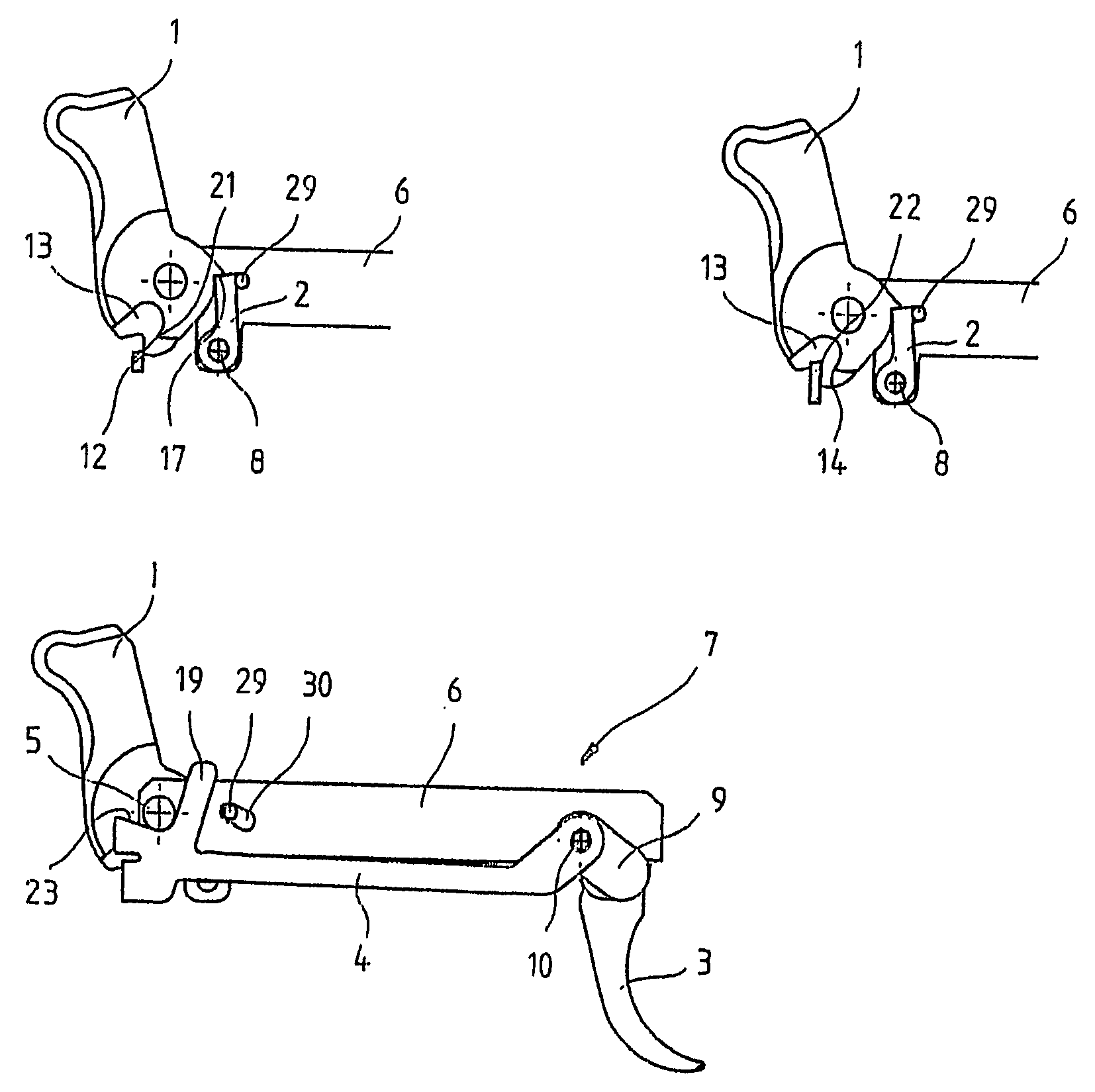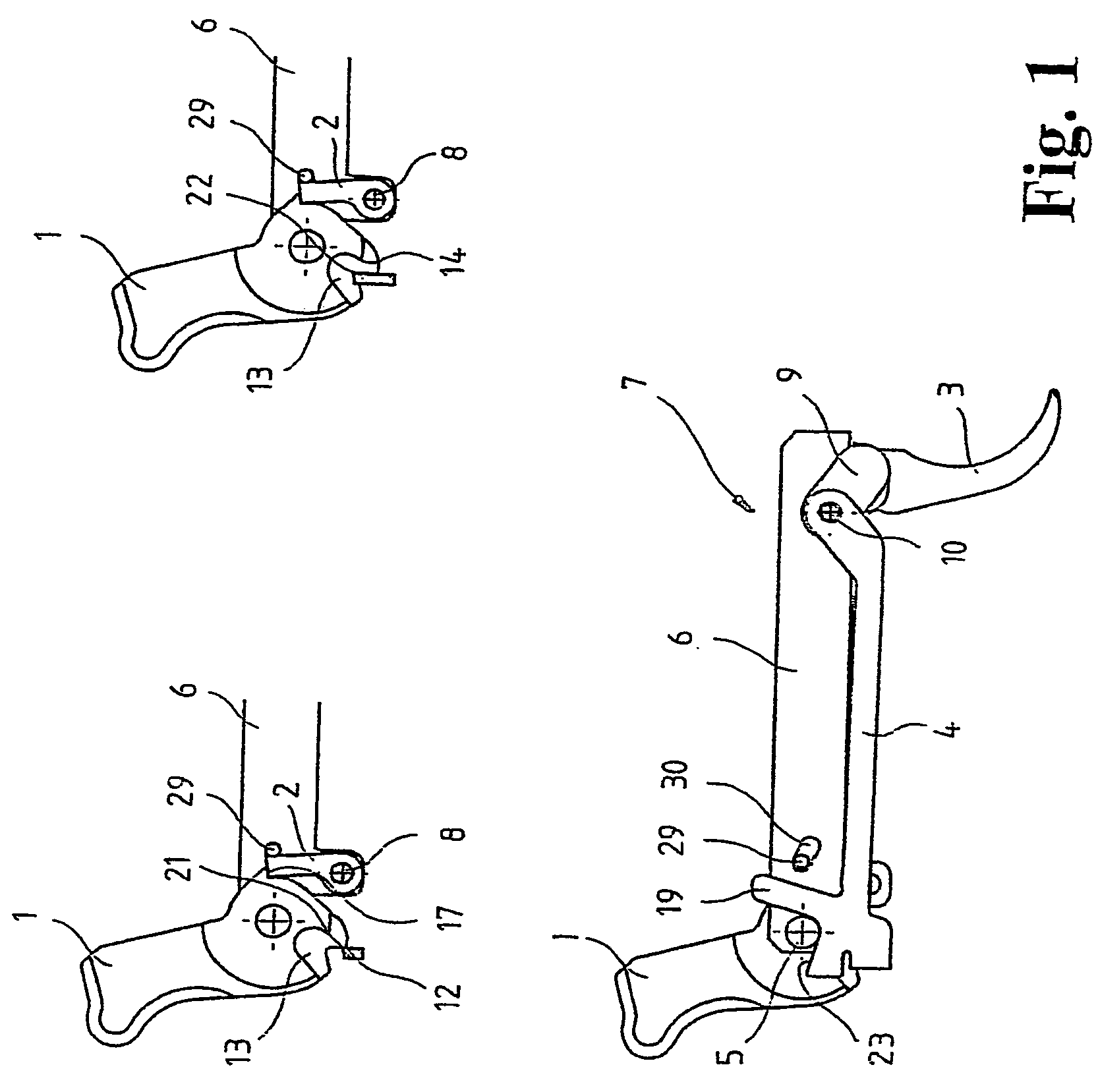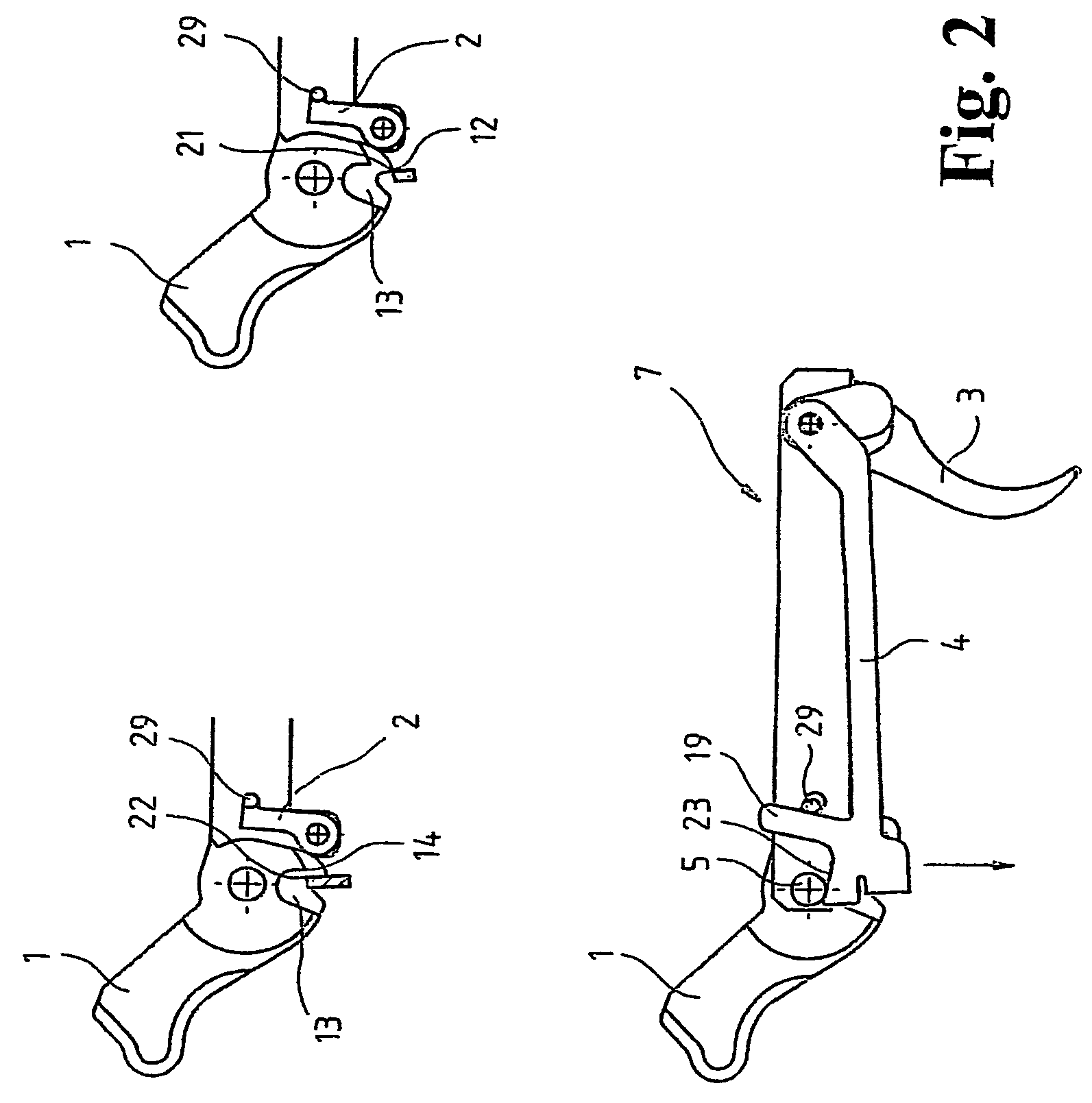Trigger system for small arms
a technology for small arms and triggers, applied in small arms, weapons, breech mechanisms, etc., can solve the problem of some high force expenditure, and achieve the effect of shortening the trigger movement, and reducing the force expenditur
- Summary
- Abstract
- Description
- Claims
- Application Information
AI Technical Summary
Benefits of technology
Problems solved by technology
Method used
Image
Examples
Embodiment Construction
[0017]The trigger system for small arms shown schematically in FIGS. 1 through 4 contains a hammer 1 with a catch 2, a trigger 3 with a trigger bar 4 connected to it by a link, through which the hammer 1 is released during activation of the trigger 3, first being placed under tension against the force of a hammer spring (not shown), and then released to set off a shot. The trigger bar 4 is moved back by a trigger spring (not shown) that pushes the trigger 3 into a forward exit position and is likewise pushed up by a trigger-bar spring (not shown).
[0018]As can be seen from the lower illustration in FIG. 1, the hammer 1 is arranged so as to be movable about a hammer axis 5 between two side parts 6 of a carrier element 7 that are separated from each other by a gap. Between the two side parts 6 of the carrier element 7, a catch 2 is also mounted so as to be movable about a cross-pin 8. Through this catch 2, the hammer 1 is held in a position under partial tension, as will be explained i...
PUM
 Login to View More
Login to View More Abstract
Description
Claims
Application Information
 Login to View More
Login to View More - R&D
- Intellectual Property
- Life Sciences
- Materials
- Tech Scout
- Unparalleled Data Quality
- Higher Quality Content
- 60% Fewer Hallucinations
Browse by: Latest US Patents, China's latest patents, Technical Efficacy Thesaurus, Application Domain, Technology Topic, Popular Technical Reports.
© 2025 PatSnap. All rights reserved.Legal|Privacy policy|Modern Slavery Act Transparency Statement|Sitemap|About US| Contact US: help@patsnap.com



